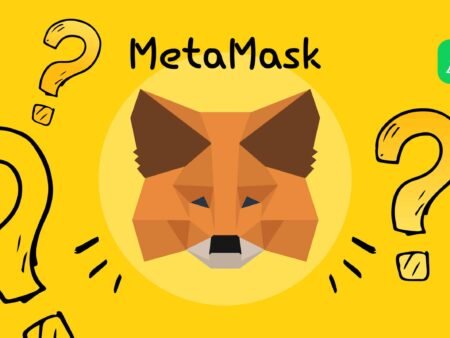If you’ve hung around in crypto circles, then you’ve probably heard of the term “layer 2,” which is usually used to describe various crypto assets. But what is layer 2 crypto, and is there any layer 1 (or 3, or 4…)? What do layers have to do with blockchain, anyway? Let’s find out!
How Does Layer 2 Work?
Blockchains may not be onions, but they do have layers… Well, at least technically. “Layer 2” simply refers to any additional frameworks built on top of existing blockchains, which are referred to as layer 1. You can think of it as putting race car wheels and engine on your trusty old Honda.
Designed to solve fundamental issues that plague most blockchain networks like Bitcoin, layer 2 solutions balance scalability, transaction speed, and throughput with a high level of security. They do this by processing transactions off-chain and then passing them back to the main chain for settlement.
Types of Layer 2 Frameworks
Layer 2 solutions are additional integrations used together with the original blockchain, not instead of it. Although these solutions are not as well known to the public, there are quite a few examples of them in the crypto market already. They come in different types, and here are the most common ones.
Sidechains
Sidechains are exactly what they seem: separate networks that can efficiently process transactions and have full interoperability with their original blockchains. They are not a layer 2 framework but an alternative scaling solution that often comes up in discussions of the blockchain technology trilemma issue.
Each sidechain can have its own consensus protocol, block size, security, and so on. Sidechains operate independently from the blockchain they can support and to which they are connected using a two-way bridge.
Bitcoin blockchain scaling solutions such as the Liquid Network, primarily applied by exchanges to facilitate faster and cheaper BTC transactions, frequently turn to sidechains.
Plasma
Ethereum’s Plasma combines smart contract technology and cryptographic verification to enable fast and cheap transactions on layer 1 networks. Such a result is achieved by offloading transactions to side chains known as plasma or child chains. Plasma chains are mostly independent and only periodically report to the main network in case of disputes or issues.

This layer 2 solution type can be pictured as a tree — that’s because it typically has a lot of child chains that all have their purpose and can be built on top of each other.
Plasma is not a very popular layer 2 solution type as it still has a lot of drawbacks, such as long withdrawal time frames. However, it is currently being thoroughly researched, so any and all issues may soon be addressed and resolved.
Validium
Validium is a layer 2 framework able to dramatically lower transaction fees while simultaneously increasing transaction speeds. It is a zero-knowledge proof solution that processes blockchain transactions off the main network. These off-chain operations get verified using smart contracts.
This layer 2 framework type doesn’t store data on its underlying blockchain, which sacrifices some network security but allows for much faster and cheaper transactions.
State Channels
State channels are, well, channels that get attached to the base layer — the original blockchain — and perform various operations that later get reported back to the main chain. They often find applications as payment channels in their simplified form.
State channels are incredibly effective, allowing users to make any number of transactions while only submitting two instances of transaction data to the underlying chain. Unfortunately, they can be quite costly to set up and need to be periodically checked on.
This framework type is the layer 2 scaling solution used by Bitcoin’s Lightning Network.
Rollup Chains
Rollup chains can roll up hundreds of transactions into a single one on the layer 1 network. Ethereum especially favors this solution because it dramatically reduces fees by splitting them among all the transactions in the rollup. At the same time, since the execution of transactions actually happens on the layer 1 blockchain, all data involved remains fully secure.
There are two types of rollup chains, zero-knowledge and optimistic ones. They differ in how they relay transaction data back to layer 1. ZK rollups, also referred to as zero-knowledge proofs, are faster than optimistic rollups but less user-friendly and assume a certain level of unverifiable trust.
What Is the Difference between Layer 1 and Layer 2?
As we have already mentioned, layer 1 refers to the blockchains we all know and love — Bitcoin, Ethereum, the Binance Smart Chain — the list goes on. Any layer 1 solution equals a fundamental change in the structure of the blockchain itself, a modification. It could be an increase in block size, an introduction of a new consensus mechanism, and more.
Layer 2 solutions, on the other hand, operate off-chain. They enhance the way transactions and data are processed and organized instead of completely overhauling them. While they transfer transactions back to the blockchain, it is crucial to note that many of them are not as secure as the original layer 1 blockchain.
Wanna see more content like this? Subscribe to Changelly’s newsletter to get weekly crypto news round-ups, price predictions, and information on the latest trends directly in your inbox!
Stay on top of crypto trends
Subscribe to our newsletter to get the latest crypto news in your inbox
Is There a Layer 3?
Modern blockchain networks do not stop at layer 2: apart from it, they tend to introduce layer 3. In fact, there is also layer 0: let’s take a brief look at it.
Layer 0
Layer 0 is the foundation and the basis that allows blockchains to function as smoothly as they do. While layer 2 solutions are built upon existing networks, layer 0 ones can support various crypto projects, regardless of what they are like. They have several functions:
- Providing baseline infrastructure
A huge entry barrier many blockchain developers face is having to code an entire project from scratch, which is no easy task. Not only does it require a lot of skills, it also is pretty heavy on resources, most importantly, one’s time. Layer 0 solutions fix that by providing baseline essential infrastructure to all blockchains that use their service.
- Enabling interoperability
One of the big downsides of crypto projects is that they often have to be on the same chain as any other project they want to connect to and work with. Even though there are 3–4 main networks that house the majority of DeFi projects, this still creates issues and, in a way, makes the industry less decentralized.
Interoperability fixes that: as long as two blockchains projects are built on the same layer 0, they will interact as if they are housed on the same chain.
- Facilitating cross-chain exchanges
Cross-chain exchanges are tough to execute and can be incredibly time-consuming and cost-ineffective. The fees can rise sky-high. However, layer 0 projects can come to the rescue: unlike layer 2 solutions, they improve the efficiency of cross-chain interaction instead of the speed and the cost of any particular blockchain.
The best examples of layer 0 projects include Cardano, Cosmos, and Polkadot. Please note, however, that despite how it may seem, layer 0 is not necessary, and many blockchains don’t have it. Still, it’s very useful and will undoubtedly play a big role in the future of the crypto industry.
Layer 3
Layer 3 is all the applications users make on top of blockchains. These improve the usability aspect of networks, making their features a lot more digestible and user-friendly. Some examples of layer 3 solutions are Uniswap, various gaming projects like Blockchain Cuties, and so on.
FAQ
What does layer 2 mean?
Layer 2 is an additional framework/protocol built on top of the existing blockchain network to enhance it.
What is the function of layer 2?
Layer 2 protocols usually make blockchains more scalable, allowing them to process more transactions per hour at lower costs and so on. All in all, their principal function is to make the existing blockchain better.
Is Bitcoin a layer 2 cryptocurrency?
Bitcoin is a layer 1 cryptocurrency, just like Ethereum or Solana.
What is a layer 3 crypto?
Layer 3 refers to blockchain-related applications like dApps, distributed storage, and games.
Disclaimer: Please note that the contents of this article are not financial or investing advice. The information provided in this article is the author’s opinion only and should not be considered as offering trading or investing recommendations. We do not make any warranties about the completeness, reliability and accuracy of this information. The cryptocurrency market suffers from high volatility and occasional arbitrary movements. Any investor, trader, or regular crypto users should research multiple viewpoints and be familiar with all local regulations before committing to an investment.
Source link



